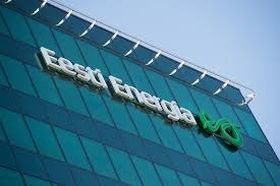Energy, Estonia, Gas Market , Good for Business, Oil, USA
International Internet Magazine. Baltic States news & analytics
Friday, 02.05.2025, 18:21
US allows Estonia's Eesti Energia to build communications for Utah oil shale project
 Print version
Print version |
|---|
The Bureau of Land Management issued a Record of Decision (ROD) on
seven right-of-way applications of Enefit
American Oil, owned by Eesti Energia,
following consideration of both draft and final environment impact statements.
The BLM assessed comments and feedback received from the public during the
60-day comment period prior to issuing the ROD, the bureau said.
"Eesti Energia's
subsidiary Enefit American Oil
on September 24 received a permit for establishing a utility corridor on
federal land, which will help connect the development project located on Utah's
private land with the regional infrastructure. Receiving the permit was
preceded by an environmental impact assessment of nearly six years, which
confirmed that the establishment of the utility corridor will not bring along
significant environmental impact and the establishment of the corridor has a
smaller environmental impact than alternative solutions," Margus Vals,
member of the management board of Eesti
Energia, told.
He said that the right of establishing the utility corridor will help the
project's competitiveness. "As we are planning to involve strategic
investors for developing the project, the approval of the U.S. Bureau of
Land Management will affirm to partners that it is possible to get the
permits necessary for the project and this knowledge will mitigate risks for
the investors," he said.
The plan is to build altogether 31 kilometers of water supply pipeline,
14 kilometers of buried natural gas supply pipeline, 18 kilometers of buried
oil product line, a 48-kilometer 138-kilovolt H-frame power line in the utility
corridor, and upgrade an estimated nine kilometers of road. In order to further
develop the project, air use permits and mining permits must also be applied
for.
The project would provide access, natural gas, electricity, and water to
— while allowing for the movement of processed oil from — Enefit American Oil's South Project, which is planned on private
land and minerals owned by Enefit.
The project is consistent with the U.S. President Donald Trump
administration's goals of American energy independence and fostering economic
growth in rural communities by supporting the creation of jobs and
infrastructure development, BLM said. The construction of the pipelines,
power lines, and road will contribute approximately 85 to 110 jobs over several
years.
Eesti Energia acquired
oil shale reserves estimated at 6.6 bln tons in the state of Utah in March 2011
with a view to developing a shale oil plant with a daily output of 50,000
barrels there.
U.S. conservation groups have fought against the Utah oil shale mine and
oil plant project. "This plan would turn plateaus into strip mines, pull
precious water from our rivers, and cause dangerous climate and ozone pollution.
It is everything the Colorado River Basin does not need," John Weisheit, a
river guide and the conservation director of Living Rivers, said in a joint
statement to BLM in July.
The South Project would produce 547 mln barrels of oil over three decades,
spewing more than 200 mln tons of greenhouse gas — as much as 50 coal-fired
power plants in a year. "The amount of energy it takes to mine and process
oil shale make it one of the most carbon-intensive fossil fuels on
Earth," the statement of conservation groups said.
The environmentalists were specifically fighting against the decision of
the BLM, which would allow Eesti
Energia's subsidiary Enefit
American Oil establish a support infrastructure for the project.
According to the initial project, altogether 30 kilometers of water supply
pipeline, 13 kilometers of buried natural gas supply pipeline, 20 kilometers of
buried oil product line, nine kilometers of service roads and approximately 50
kilometers of high voltage powerlines would have been established in the
utility corridor.








 «The Baltic Course» Is Sold and Stays in Business!
«The Baltic Course» Is Sold and Stays in Business!

